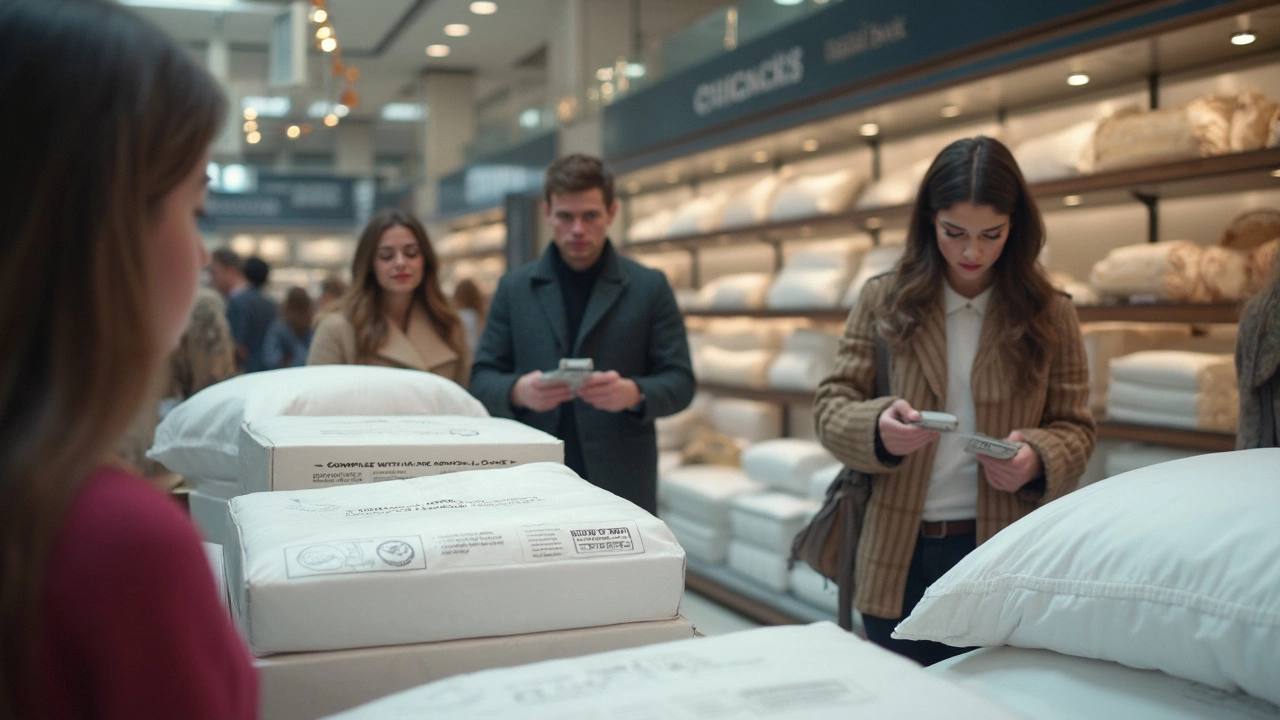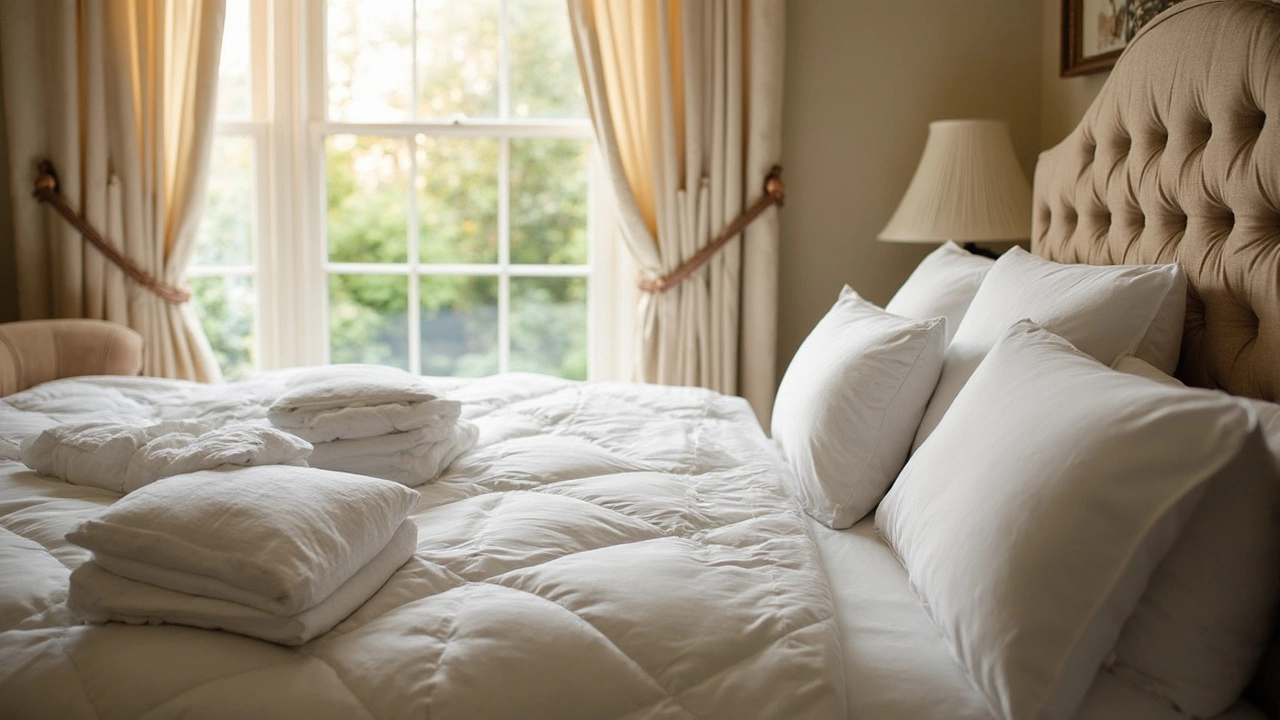Did you know that not every blanket or pillow is legally considered bedding? Rules around bedding might sound super dry, but they actually help protect you from shady products and false claims. If you’ve ever noticed those stiff, scratchy tags on your pillows that say “DO NOT REMOVE UNDER PENALTY OF LAW,” you’ve brushed right up against the legal side of bedding.
So what actually counts as bedding in the eyes of the law? It’s not just stuff you sleep under—there’s a pretty broad range. Think mattresses, sheets, pillowcases, quilts, mattress pads, comforters, and even futon covers in some states. The common thread: Anything that’s made to support, cover, or cushion a person while they’re lying down usually falls under this definition. Retailers have to follow laws to make sure materials are safe, clean, and honestly labeled. Let’s dig into what that means for you next time you shop or toss your old bedding out.
- What Does the Law Call Bedding?
- Why Legal Definitions Matter in Bedding
- Common Labeling Rules and Surprises
- Quick Tips for Smart Bedding Choices
What Does the Law Call Bedding?
So what exactly gets labeled as bedding by the folks who make the rules? State and federal laws spell it out, sometimes in surprisingly precise ways. In the U.S., most regulations say bedding is anything meant to support, cushion, or cover someone while they sleep or rest. This goes way beyond just sheets and blankets. For example, the Uniform Bedding and Upholstered Furniture Law (yep, that’s a real thing) lists mattresses, mattress pads, toppers, box springs, comforters, pillows, quilts, featherbeds, and even sleeping bag liners as bedding.
Some places have even more detailed lists. New York, for instance, forces manufacturers to specifically mention futons, waterbeds, sleeping bag shells, and couch beds. In California, the rules include pet beds if they look like a mini human mattress. The main factor is if it’s designed for lying, sitting, or sleeping on—overnight or for quick naps.
- Might surprise you: The law sometimes covers things like bean bag chairs, hammock cushions, and even padded mats if they’re sold for bedding use.
- Used bedding—basically, any of these items that’s been in someone’s home or store before—faces extra rules about cleaning and labeling to keep you safe from bugs or dirt.
- Internationally, legal definitions can differ. Some countries include duvets and comforters, while others just focus on any stuffed or padded item for sleep.
The bottom line? If it’s stuffed, padded, or fabric-covered and meant for sleeping or resting, the law probably considers it bedding. These exact definitions help protect you from unsafe, dirty, or under-labeled products, so it’s not just legal talk—it’s about your home and health.
Why Legal Definitions Matter in Bedding
It sounds a little weird, but the way bedding gets defined by the law really shapes what's on the market and in your home. These rules aren't random—they’re here to keep you safe, make sure you get what you pay for, and weed out unsafe junk that could do more harm than good.
Take those "do not remove" tags: they're not just there to annoy you. Most states in the U.S. require new bedding to have those labels. They show exactly what’s inside (like polyester, cotton, or, sometimes, recycled materials), helping you avoid surprises and allergic reactions. Old laws date back to when some companies stuffed mattresses and pillows with whatever scraps they had lying around—sometimes even trash.
Bedding rules also matter if you’re buying secondhand. Regulations usually say used bedding has to be properly cleaned, sanitized, or sometimes marked a certain way so nobody tries to pass it off as new. In 2024, the National Conference on Weights and Measures shared that nearly 70% of people read bedding labels before buying to check fabric content and where it’s made.
Here’s a quick look at why these laws are a big deal for shoppers:
- Safety: Stopping unsafe or dirty stuff from sneaking onto store shelves
- Transparency: Making sure you’re not tricked about what you’re buying
- Health: Preventing the spread of pests or germs from used bedding
- Returns and Disputes: Giving you solid ground if the product isn’t what it claimed
Here’s a quick data snapshot:
| Year | Bedding Recalls Due to Label Issues (U.S.) | Consumer Complaints on Bedding |
|---|---|---|
| 2022 | 14 | 4,800+ |
| 2023 | 11 | 5,200+ |
| 2024 | 9 | 5,900+ |
As the Consumer Product Safety Commission shares,
“Clear labeling and material rules mean consumers aren’t left guessing about what they’re sleeping on—and that’s better for everyone.”
So whether you’re buying a luxury duvet, a basic pillow, or a secondhand futon, knowing why legal definitions matter can save you time, money, and a headache down the line.

Common Labeling Rules and Surprises
Ever wondered why nearly every pillow or mattress comes with that scratchy tag you’re not supposed to remove? It all comes down to tough bedding laws. Every state in the U.S. has rules to make sure bedding labels show what’s really inside, thanks to cases where businesses used random fillers or even unsanitary materials. Some of the main things these labels must cover:
- Material contents: What’s actually inside—cotton, down, foam, polyester, or other fibers.
- Percentage breakdowns: Labels usually have to show precisely how much of each material is used by percent.
- New vs. used: Most states require bedding to be clearly marked if it contains any used or recycled materials. Shops can’t sell used mattresses as new.
- Manufacturer details: The name, address, and registration number of whoever made or imported it. This means you can track down the producer if something’s off.
- Law tag info: That famous “Do Not Remove” tag is a legal requirement for anyone selling the item, not for buyers at home.
If you want more details or need to compare manufacturers, here’s a sample from real-world law tags across different states:
| State | Label Language | Must Disclose | Fines for Mislabeling |
|---|---|---|---|
| California | English & Spanish | Detailed materials breakdown, used content, flammability | Up to $500/item |
| Texas | English | All new/used fillings, manufacturer ID | Up to $1,000/item |
| New York | English | “All New Material” wording, contents percentages | Up to $2,000/item |
Here’s the kicker: mislabeling bedding isn’t just a slap on the wrist. States fine companies thousands of dollars per item, and some places even ban companies from selling bedding if they mess up too many labels.
Sometimes, the rules lead to weird surprises. For instance, feather or down bedding must list exactly what bird the feathers come from. “Mixed down” isn’t enough—labeling needs to say if it’s goose down, duck down, or both. And if you thought using recycled materials sounded eco-friendly, be prepared to see “secondhand” or “reconditioned” on the law tag—it’s not always a marketing bonus.
One last surprise: imported bedding gets even closer attention now, with customs checking for accurate law tags and banning shipments that fake their contents. Just a little reminder that every time you tug on one of those tags, there’s a whole system keeping things honest behind the scenes.
Quick Tips for Smart Bedding Choices
Shopping for bedding isn’t as simple as grabbing a soft sheet set. Even though most of us just want something comfy, keeping the bedding laws and definitions in mind can save headaches (and sometimes money). Here’s how to make smarter picks:
- Read every label. Federal rules require that bedding come with those big, stiff tags for a reason—you get the breakdown of materials, and clues on whether anything’s recycled, new, or treated with chemicals. If a product doesn’t list what’s inside, that’s a red flag. Some states also need bedding labels to show if the item is “all new material” or has been remanufactured.
- Watch out for misleading claims. If something says “100% organic” or “hypoallergenic,” check for official certifications. The FTC cracks down on false advertising in this area, so look for certifications like GOTS (Global Organic Textile Standard) or OEKO-TEX. If there's no proof, move on.
- Consider the return policy. Some states allow you to return bedding if it doesn’t match the label description, but others don’t. Most big retailers post clear policies online—don’t skip this step if you’re ordering online, especially with mattresses.
- Don’t remove tags until you’re sure. Those "do not remove" tags? They’re meant for sellers, but keeping them on until you’re happy with your purchase is smart. Some stores might not accept returns without them.
- Sanitation matters for used bedding. If you’re buying secondhand, most states require suppliers to sanitize and clearly label any used or rebuilt bedding. Be sure to check—it’s for your health.
Here’s a quick chart with common bedding types and what the law usually covers:
| Bedding Type | Usually Covered by Law? | Label Required? |
|---|---|---|
| Mattresses | Yes | Yes |
| Mattress Pads/Protectors | Yes | Yes |
| Pillows | Yes | Yes |
| Sheets/Pillowcases | Yes | Yes |
| Blankets/Comforters | Yes | Yes |
| Decorative Throw Pillows | Sometimes | Depends |
When in doubt, hang on to your receipts, packaging, and those big tags until you’ve checked everything at home. Being a little careful upfront beats having to haggle with a retailer later.

